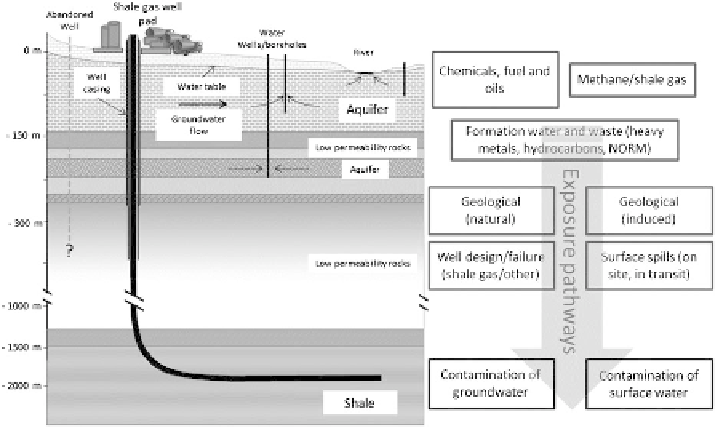Environmental Engineering Reference
In-Depth Information
groundwater monitoring requirements both in terms of establishing a base-
line and during drilling/operation of the well(s). This contrasts with the at-
tention given to induced seismicity and associated monitoring requirements.
The Environment Agency has gone some way to identify the environmental
risks and has completed a high-level risk assessment.
37
It is also in the
process of developing technical guidance to explain which environmental
regulations apply to operations to explore for on-shore oil and gas in Eng-
land and the permissions that need to be obtained. This will need to be
developed further into more site-specific guidance for shale gas exploration/
exploitation risk assessments to ensure adequate controls are implemented
and risks managed effectively. The different source-pathway-receptor com-
binations that will need to be considered are illustrated in Figure 6.
The environmental regulators each have polices for the protection of
groundwater.
38-40
These set out the legal (EU and UK) requirements to
manage and protect groundwater (and the associated wider environment);
the regulatory framework; environmental objectives; management and
risk assessment
tools/methodologies; and the supporting monitoring
requirements.
The UK groundwater protection strategies adopt a risk-based approach in
general but apply a precautionary approach in some instances where the
consequences of impact may be so severe that the uncertainties associated
with assessing risk are considered to be too great. An example of this is the
inner source protection zone (or SPZ1) for public water supply abstractions.
The precautionary principle is applied and certain activities (e.g. landfilling)
Figure 6 Conceptualised illustration of pollutants, pathways and receptors associ-
ated with shale gas operations.

